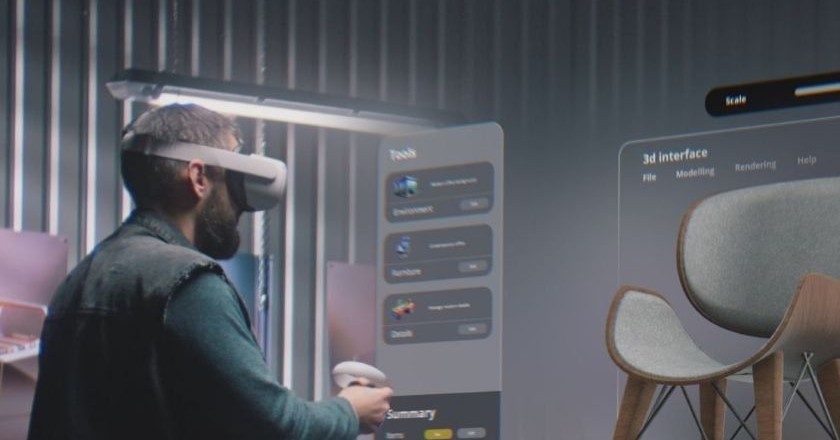Behind every big purchase is a customer looking for reassurance—so, how do you give it to them: through bots or live chat? The answer isn’t always black and white. Some questions can be handled by fast, automated responses, while others need a human touch.
Choosing the right combination can make a big difference in turning interest into a confident purchase. It’s not about choosing one or the other — it’s about knowing when each works best.
Breaking Down Chatbots and Live Chat for Retail: What Works When
Both chatbots and live chat play important roles in retail, and knowing when to lean on one or the other helps you offer the best support.
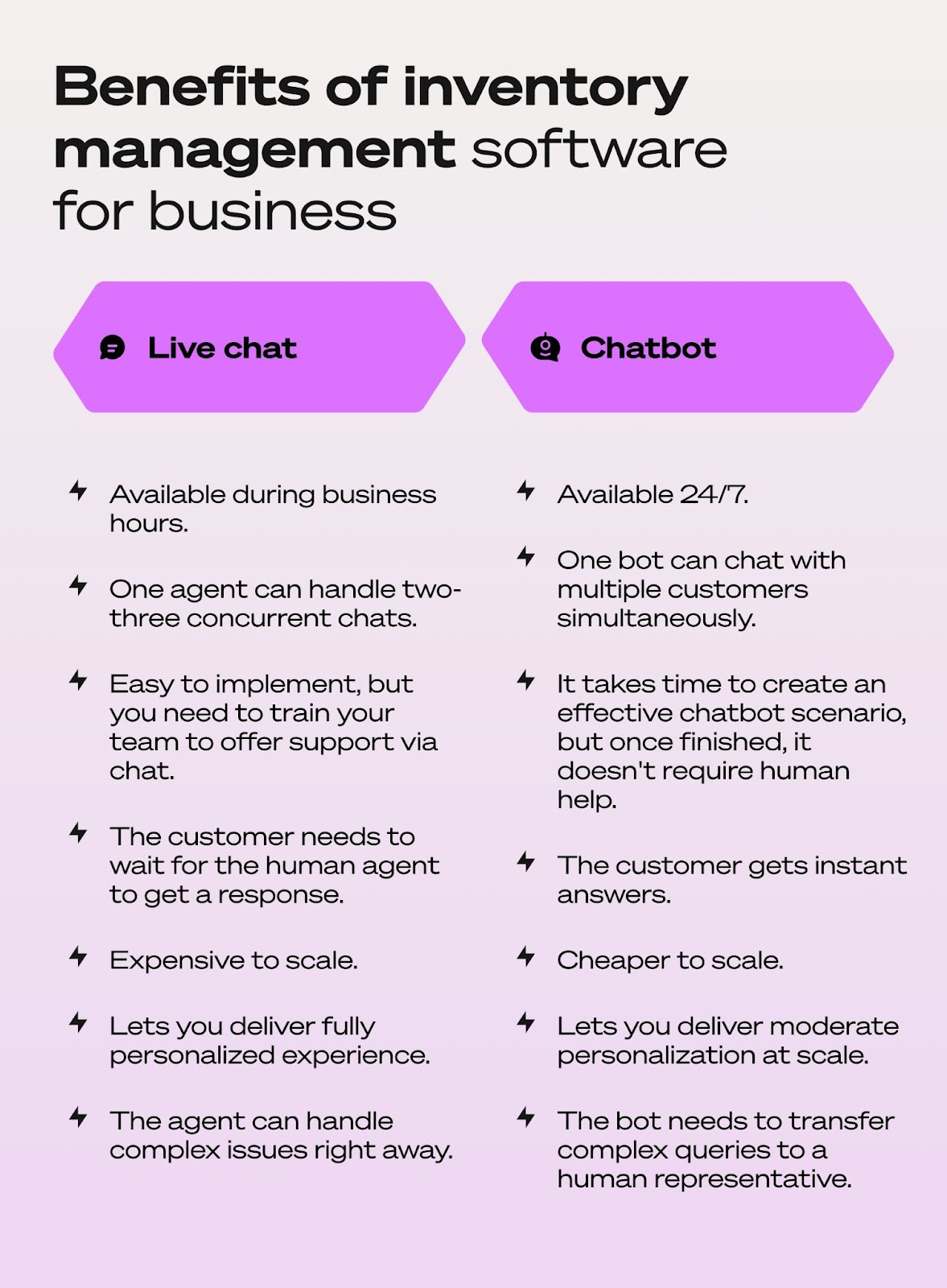
How Retail Chatbots Drive Business Growth and Improve Customer Experience
Retail chatbots are great at handling the routine stuff—answering common questions, guiding shoppers through product info, and helping with order tracking. By quickly taking care of these everyday tasks, chatbots free up your team to focus on more complex customer needs.
They’re also available 24/7, which means customers can get help anytime, even outside regular store hours. This round-the-clock support keeps shoppers engaged and reduces the chance they’ll leave frustrated.
For business growth, retail chatbots can boost sales by recommending related products and helping customers find exactly what they want. They keep conversations going and gently guide shoppers toward completing their purchase without feeling pushy.
Live Chat in Retail: The Friendly Voice Your Customers Want
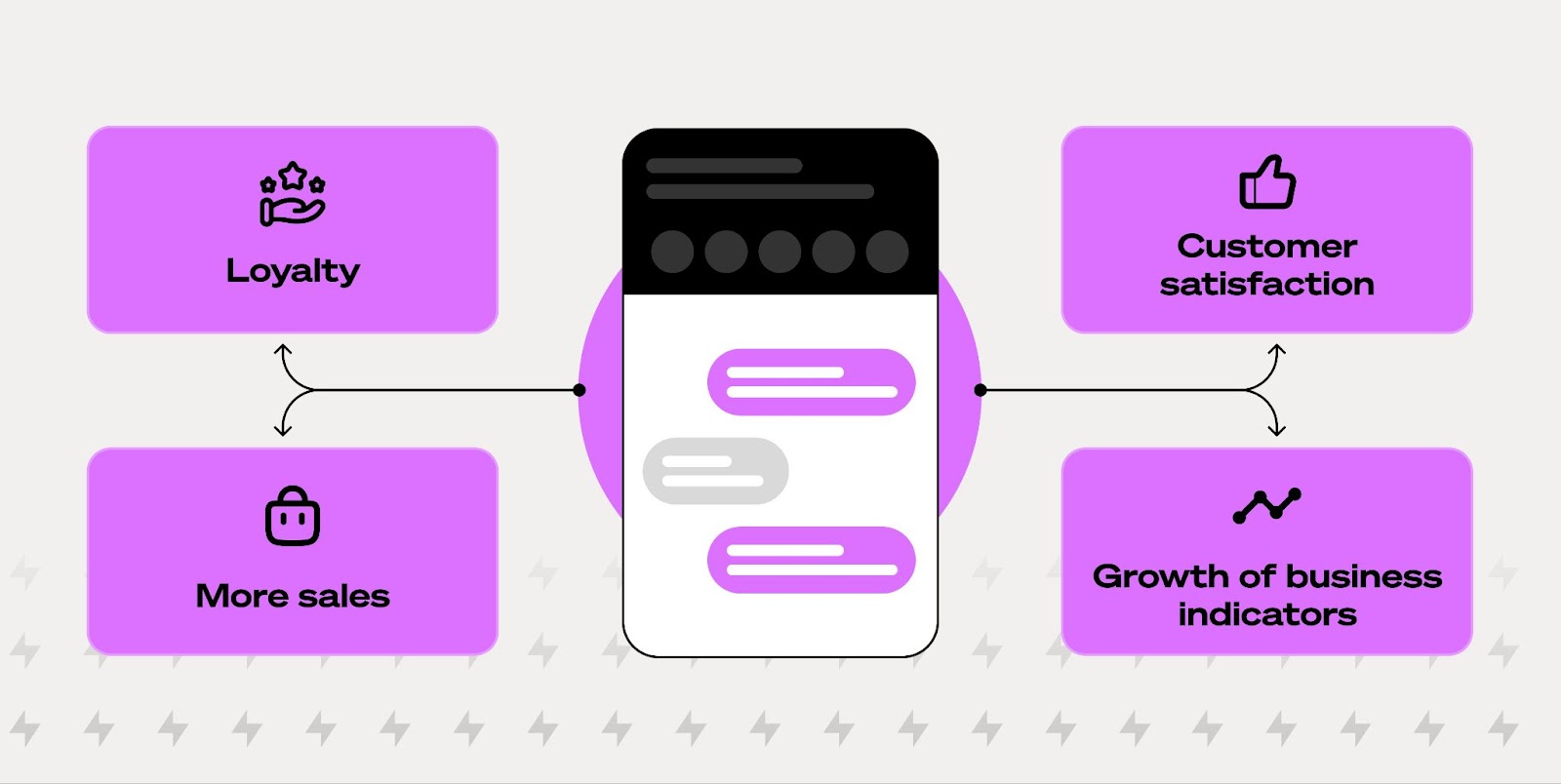
Live chat for retail, on the other hand, brings that personal touch customers often look for when making bigger purchases. Having a real person ready to answer questions, offer advice, or simply reassure shoppers can make a big difference. It’s no surprise that 60% of customers are more likely to return to a website that offers live chat support—because that personal connection keeps them coming back.
Unlike retail chatbots, live agents can pick up on the nuances in a customer’s tone or hesitation and respond with empathy and understanding. That kind of connection builds trust and helps customers feel confident about their choices.
Live chat also allows for more detailed conversations, where agents can guide customers through complex information or solve problems that automated systems can’t handle.
The Real Differences Between Chatbots and Live Chat for Retailers
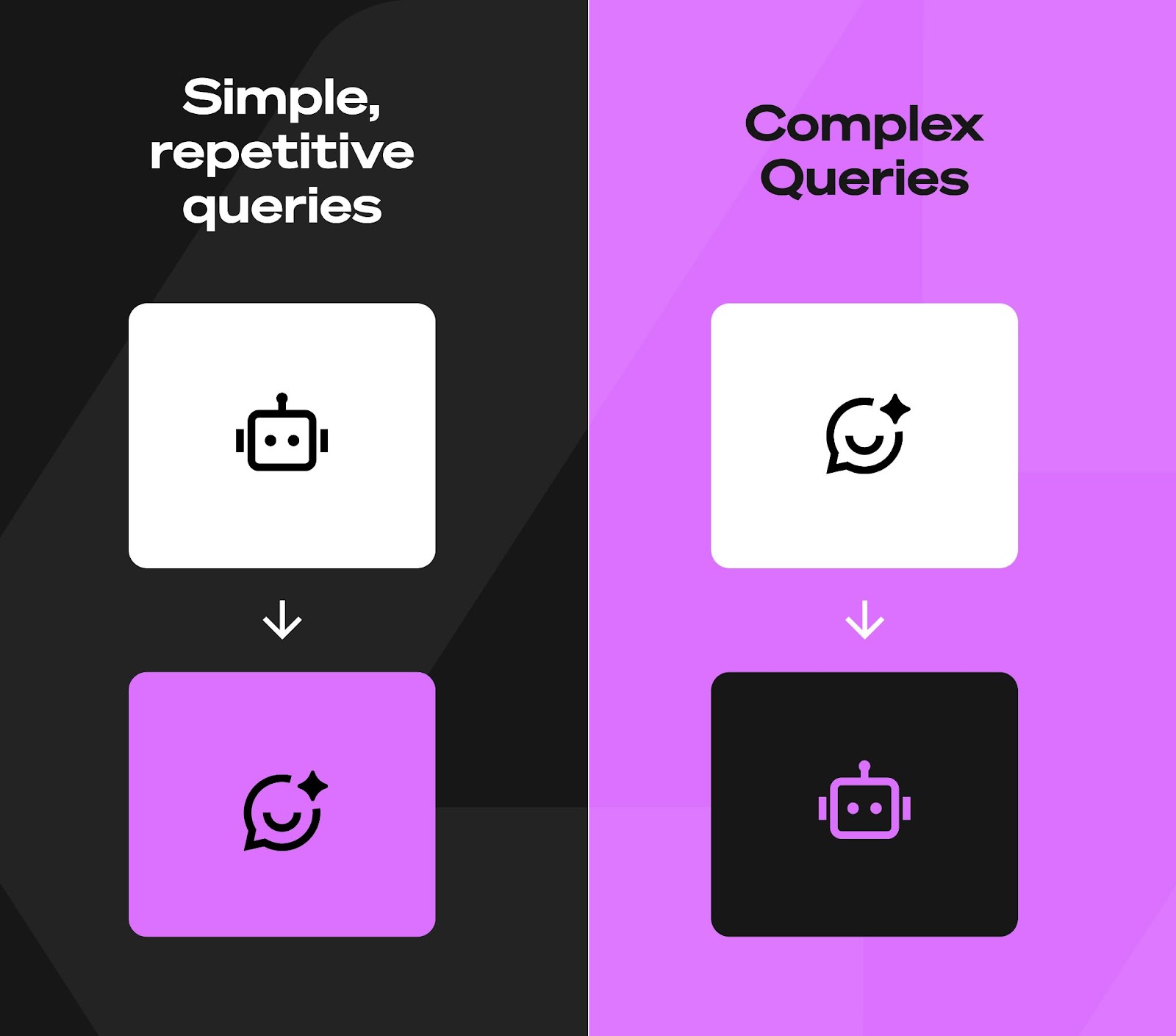
Chatbots and live chat might seem similar, but they play very different roles when it comes to helping your customers. Chatbots are great at handling simple, repetitive questions quickly—think stock availability, store hours, or basic product info. They never sleep and can serve multiple customers at once, making them perfect for straightforward tasks.
Live chat for retail is better suited for situations where shoppers need detailed help, advice, or reassurance. It’s a two-way conversation with a real person who can adapt on the go and address specific concerns.
For retailers, the challenge is knowing when to rely on automation and when to bring in human support. Chatbots can efficiently handle the basics, freeing up your team’s time. Live chat should step in when a more human touch is needed, helping close sales and build relationships.
The Pros and Cons of Using Retail Chatbots for Big Purchases
Retail chatbots can do a lot for retailers, but they still have their limitations. Let’s explore what works and what doesn’t.
How Retail Chatbots Take Care of Everyday Customer Questions
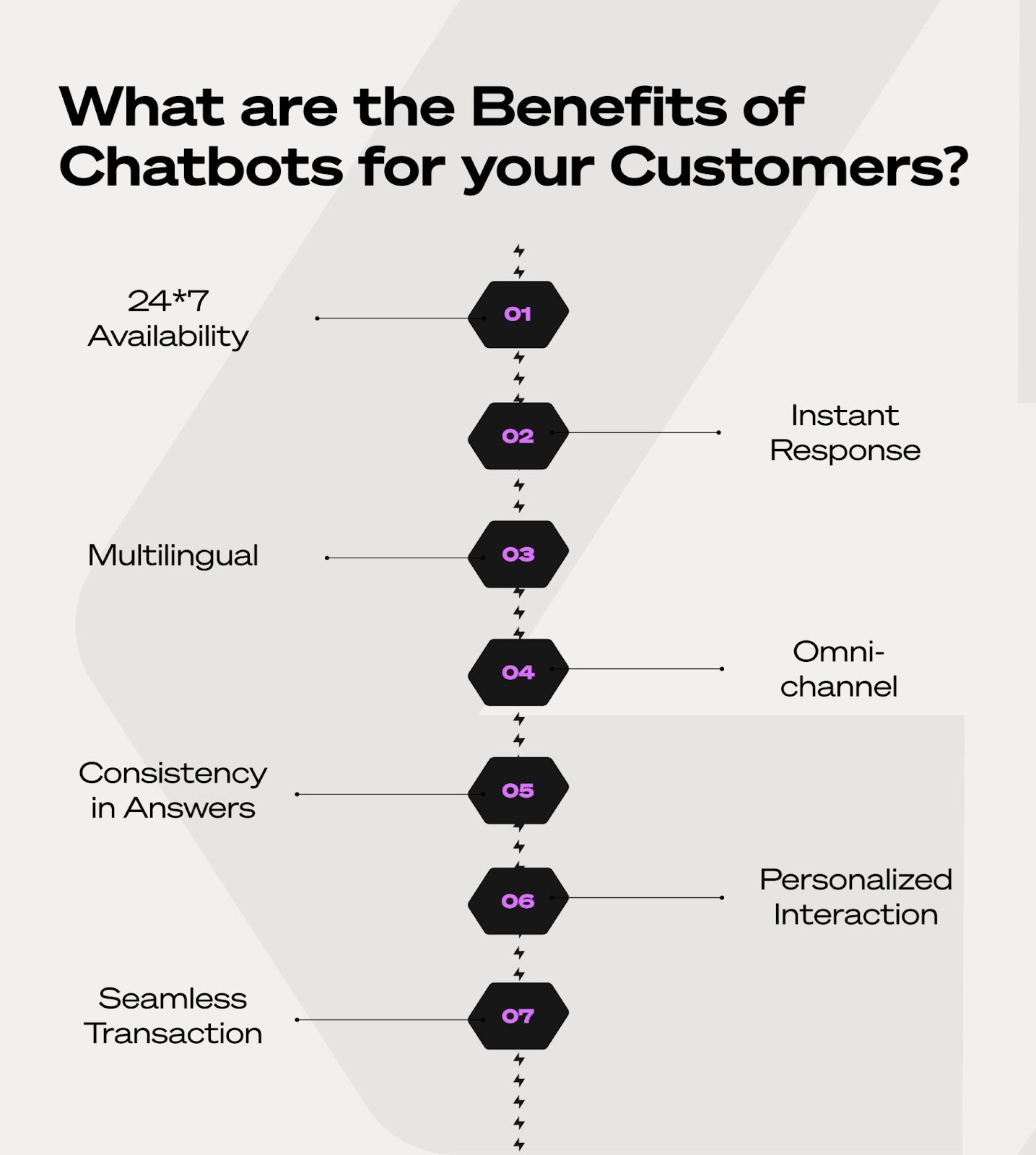
Retail chatbots are built to handle the simple, common questions customers ask all the time — things like whether a product is in stock, how long shipping takes, or the return policy.
By answering these routine questions quickly, chatbots help your team spend more time on the issues that need a real person’s attention.
Retail chatbots also work around the clock, so customers can get information anytime, day or night. Plus, they can handle multiple chats at the same time, which keeps wait times down and customers satisfied.
Why Some Questions Still Need a Real Person, Not a Chatbot
Retail chatbots are great for simple, straightforward questions, but when conversations get unpredictable, that’s where real people need to step in. Sometimes customers need a level of flexibility and understanding that automated responses just can’t provide.
There are moments when customers want to explain their unique situation or ask follow-up questions that don’t fit into a fixed script. Live agents can listen, clarify, and adjust their answers in the moment — something chatbots aren’t built for.
In addition, complex returns, billing issues, or product customizations often require judgment calls and problem-solving skills that only humans can provide. These scenarios benefit from a live conversation where the customer feels heard and valued.
In short, while retail chatbots handle the basics, live agents are there for the moments when a little extra care, creativity, or nuance is needed.
Examples of Effective Chatbot Use in Retail
In retail, chatbots are often used to handle quick tasks like confirming stock levels, helping customers find product options, or assisting with simple order updates. For instance, some stores set up chatbots to guide shoppers through product features or suggest popular accessories, making the shopping experience smoother without needing a live agent for every question.
Another common use is handling appointment bookings or sending delivery updates automatically, saving time for both customers and staff.
While basic retail chatbots handle simple tasks, some solutions go further by supporting your team behind the scenes. Tools like Evoneer’s AI assistant connect directly to your store’s systems and give your team instant access to real-time info like inventory, warranties, and product details.
This means your staff spend less time searching for answers and more time focused on helping customers. It’s a subtle shift from automating customer chats to empowering your team with the information they need — especially valuable when questions get tricky or sales get busy.
The Ups and Downs of Live Chat in Complex Sales
For big purchases, live chat can make a big impact, but it’s important to know how to use it effectively and what to watch out for.
How Talking to a Real Person Boosts Customer Satisfaction
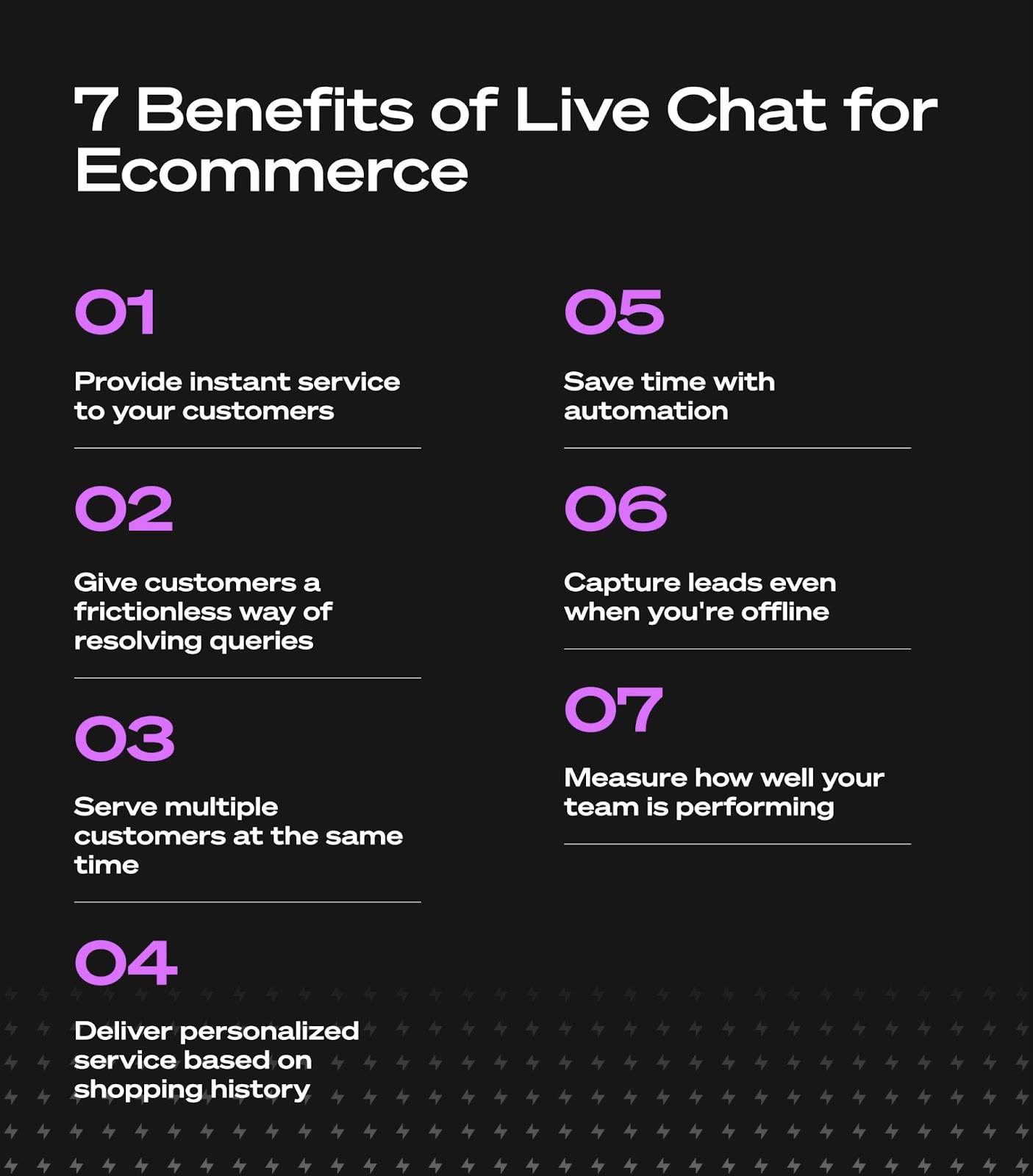
When customers are about to make a big purchase, they don’t just want facts; they want to feel sure they’re making the right decision. Speaking with a real person can help provide that reassurance.
Having a live agent available creates an immediate sense of trust and security, making customers feel heard and valued. Whether it’s addressing a concern, offering expert advice, or guiding them through a complex decision, a personal touch helps customers feel more confident about their purchase.
And it’s not just about answering questions either. Live chat for retail lets agents pick up on cues, like hesitation or confusion, that might otherwise go unnoticed in automated exchanges. This level of empathy and connection is something a chatbot for retail simply can’t replicate.
Challenges of Scaling Live Chat Support in Retail Settings
While live chat can make a big impact, expanding it as your store grows comes with its own set of challenges. As customer demand grows, managing the increased volume of inquiries and maintaining the quality of service can become more difficult. Here are a few things to keep in mind:
- Increased volume: As your customer base grows, so does the number of inquiries. Keeping up with the demand can lead to slower response times, which may frustrate customers.
- Balancing speed with quality: Customers expect quick answers, but they also want thoughtful, personalized responses. Finding the right balance between being fast and thorough is key.
- Consistency across agents: As more agents handle live chat, it can be difficult to maintain consistent responses and service levels, especially with complex queries.
- Cost of scaling: More agents mean better coverage, but the cost can add up quickly. The trick is finding the balance between having enough staff and staying within budget.
When Live Chat Turns Browsers Into Buyers
With live cha for retailt, customers get the human interaction they often need to make a decision. A real person can answer questions and offer reassurance, leading to more conversions.
In fact, customers are 2.8 times more likely to buy when they engage in live chat. This is because real-time conversations give customers the opportunity to ask questions, get immediate answers, and feel reassured about their decision, especially with more complex products or higher-value purchases.
Live agents provide personalized support, offering tailored advice and helping navigate more complex inquiries. They can also suggest products that enhance the shopping experience—something a bot can’t match.
How to Pick the Right Customer Support Strategy for Your Business
Every store runs a little differently, so choosing the right customer support means tailoring it to fit your unique needs.
The First Step to Better Support: Knowing Your Customers and Your Team’s Limits
Before you can offer great support, you need to really understand who your customers are and what they expect. Are they looking for quick answers, detailed advice, or something in between? Knowing this helps you figure out how to meet their needs without overloading your team.
At the same time, it’s important to be realistic about what your team can handle. Are they trained and equipped to handle complex questions? How many chats or calls can they manage without burning out? Understanding your team’s strengths and limits means you can set up support that’s both effective and sustainable.
Getting clear on these basics creates a solid foundation, so your customers get the help they need and your team stays confident and supported.
Helping Your Team Get Comfortable Working Alongside AI
When new systems come in, the most important thing is helping your team get comfortable and confident using them.
Start by giving your staff clear training on how AI can help, not replace, their work. Show them how AI can take care of routine questions or gather info, so they can focus on what really needs a human touch.
Encourage an open mindset where your team sees AI as a teammate that lightens their load, not a threat. And don’t forget ongoing support — regular check-ins and feedback sessions help smooth out any bumps along the way.
When your team feels good about using AI, it shows in the service they deliver, making both their jobs and your customers’ experiences better.
Boosting Customer Happiness: Combining Chatbots and Live Chat for Better Support
Blending chatbots with live chat lets you cover all the bases. Retail chatbots can quickly handle routine questions and simple requests, giving customers fast answers without making them wait. Then, when a customer needs detailed advice, reassurance, or a tailored recommendation, live agents can jump in to provide that personal connection. This combination ensures customers get the right kind of support at the right time, whether it’s a quick question or a thoughtful conversation.
By mixing automation with real human interaction, you keep customers satisfied and your team from getting overwhelmed. It’s a smart way to deliver better service and make sure everyone, customers and staff alike, has a positive experience.

.png)



















